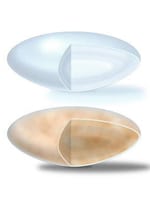A cataract is a common condition that causes a clouding of the eye's natural lens, and affects millions of people each year, including more than half of all Americans over the age of 65. Cloudiness develops as a result of a buildup of protein in the lens
Cataracts cause a progressive, painless loss of vision. The lens clouds naturally as we age causing people to develop a gradual reduction of vision. The exact cause of cataracts is unknown, although it may be a result of injury, certain medications (for example, steroids), illnesses (such as diabetes), prolonged exposure to ultraviolet light and smoking.

Diagnosing Cataracts
Your doctor will perform a thorough examination and series of tests in order to diagnose a cataract. A dilated eye exam is typically necessary, so that your doctor may examine the lens and other structures of the eye.
Symptoms of Cataracts
Patients with cataracts often do not experience any symptoms when the condition first develops. Cataracts will continue to progress with no apparent pain, although patients may experience:
- Blurred or hazy vision
- Double vision
- Poor vision in bright light
- Seeing halos around lights
- Poor vision at night
- Yellowish tinged vision
- Frequent changes in eyeglasses or contact lens prescription

Treatment of Cataracts
If visual impairment begins to interfere with your ability to read, work or do the things you enjoy, you may want to consider cataract surgery to restore your vision. Cataract surgery is the most commonly performed surgical procedure in the US, and can be performed quickly and easily with a success rate of over 90 percent and a minimal risk of complications.
Cataract Surgery
Cataract surgery is a minimally invasive procedure that involves numbing the eyes with anesthesia and then making a tiny incision into which an ultrasonic probe is inserted. The probe breaks up, or emulsifies, the cloudy lens into tiny pieces and then suctions them out of the eye. Once the cloudy lens has been removed, a new artificial lens is implanted into the eye. This lens is known as an intraocular (IOL) lens, and can often be inserted through the same incision that the old lens was removed from.
Surgery usually takes less than 30 minutes to perform and is typically painless. Dr. Meskin, Dr. Faridi, and Dr. Voldman all perform the most advanced “no stitch, small incision” microsurgical cataract techniques. After the procedure, a patch may be placed over the eye and you will be asked to rest for a while. Patients are able to go home the very same day, although you will need someone to drive you. For the next few days, you may experience itching, mild discomfort, and sensitivity to light and touch. Your doctor will prescribe eye drops to help the healing process.
Femtosecond Laser Assisted Cataract Surgery (FLACS)
Laser assisted cataract surgery is the latest technology available for precise, reproducible and safe surgery. FLACS can be paired with any IOL design to optimize visual results. A thorough evaluation by your cataract surgeon is necessary to determine whether patients are candidates for FLACS.
There are several different intraocular lenses (IOLs) available to help each patient achieve the best possible results from his/her cataract surgery. Traditionally, cataract surgery involves monofocal lenses, which can only focus on objects near or far, but can not adjust to accommodate varying distances. With traditional monofocal IOLs, patients often achieve excellent vision but may be more reliant on glasses or contact lenses for some tasks. This is in contrast to multifocal IOLs. Multifocal IOLs allow for a fuller range of vision at near, intermediate, and far distances; in some cases, significantly reducing the need for eyeglasses or contact lenses. Some IOLs can also correct astigmatism (Toric IOLs). These IOL choices are newer options available to cataract patients. Your doctor will discuss which IOL may be best for you.

Risks and Complications
If left untreated, cataracts generally progress slowly over time. Fortunately it is very rare for cataracts to damage or hurt the eye. It is mainly the quality of one’s vision that worsens as the cataract progresses. It is important to see your eye doctor regularly in order to detect cataracts and discuss treatment options.
Although cataract surgery is considered safe, there are certain risks associated with any surgery. Some of these risks may include pain, infection, swelling and bleeding. Your doctor will discuss the cataract surgery in more detail during your visit.

